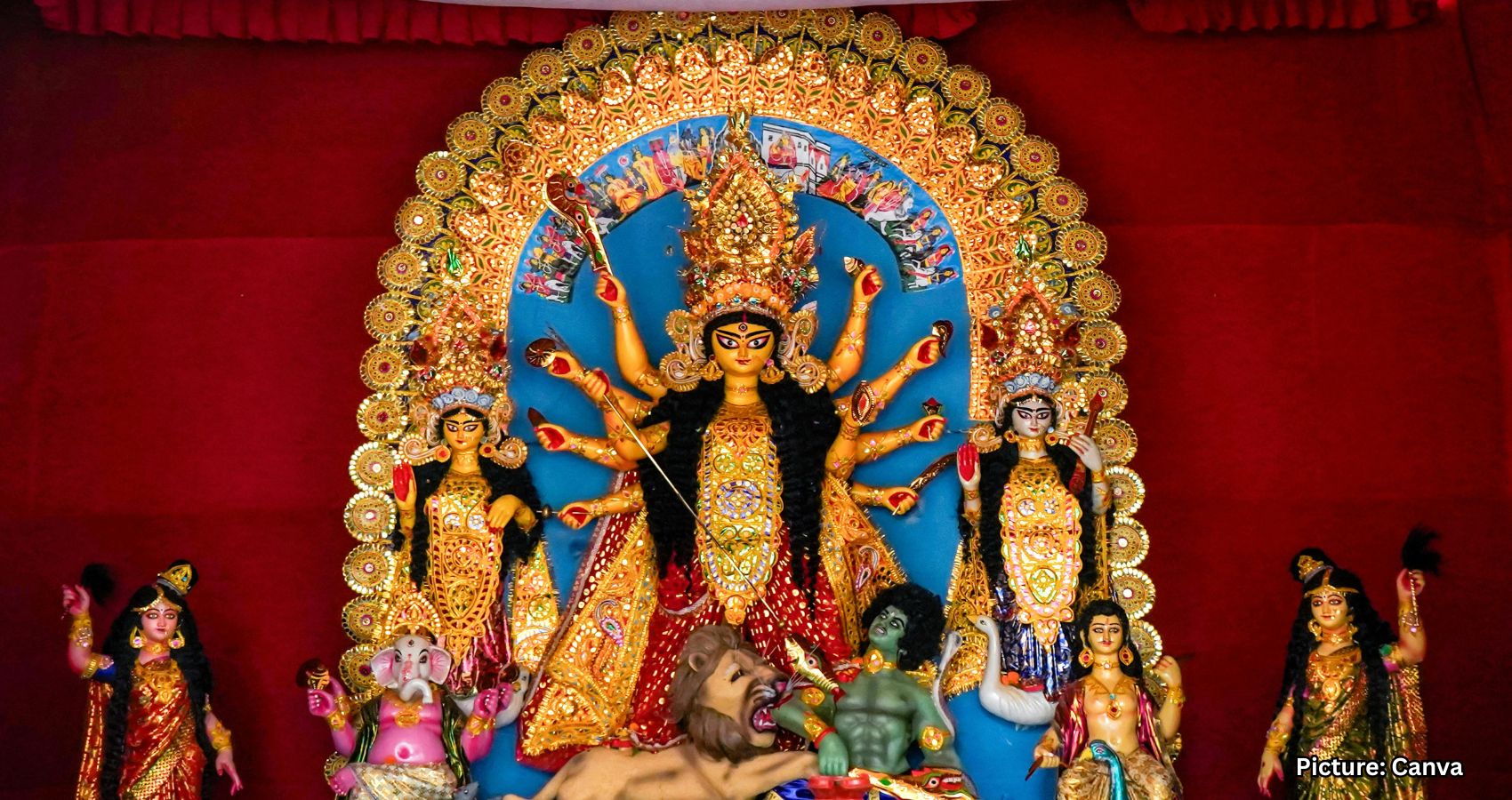The Navarathri season is coming to an end, marking the conclusion of vibrant celebrations, traditional dances, and cherished family gatherings centered around the Golu doll displays.
The Navarathri season is drawing to a close, signaling the end of lively garba dances, spontaneous bursts of Carnatic music, and the preparation for Vijayadashami classes by classical dancers. The crowded shamianas filled with devotees, the enthusiastic Golu hoppers, and the first wave of festive attire for the fall season are now behind us. The beautifully crafted statues that adorned homes are carefully wrapped and stored away, awaiting their next appearance in the cycle of tradition.
Each year, Golu displays seem to elevate in creativity and inventiveness. One household we particularly admire showcases a side-show brimming with playful imagination. In every Golu display, stories linger on the orderly steps, waiting to be told, yet often overlooked in the hustle and bustle of the festivities. It is a reminder of the whimsical nature of life, which many strive to preserve through tradition.
The Golu tradition, which involves the display of dolls, is believed to have originated in the 14th century during the height of the Vijayanagara Empire. The royal families of that era, especially in the Thanjavur region, began showcasing their dolls and hosting gatherings. Over time, they invited local musicians and dancers to perform, transforming the occasion into a celebration of the arts. Vijayadashami became a significant day for artistic beginnings and blessings.
In the homes we visit during this season, we often hear stories of dolls passed down through generations. One friend shared how her vegetable set originated from her great-grandmother, passed to her grandmother, who brought it to the U.S. in the 1960s, and now it is cherished by her mother. She plans to pass it on to her daughter someday. Observing the misshapen vegetables, I felt a deep connection to the tradition. These dolls, crafted with the best materials available, reflect the imperfections of real life, capturing the essence of the farmers who might have produced them. The vibrant greens and reds of the vegetables are striking, almost as if they are blushing with life.
While the reason for the nine-day celebration of Navarathri remains unclear, it likely aligns with the agricultural cycles of the time. This period may have represented a lull between harvest and planting, a time when the crops were at their peak strength, allowing for a brief respite filled with joy and celebration.
As a child, I often yearned to take the Golu dolls down from their shelves and play with them. However, we were not permitted to do so. My grandmother had gifted them to my mother, and it felt futile to have so many dolls sitting idle, their stories waiting to be enacted. We were allowed to touch them only on the day they were displayed or when they were carefully wrapped back in old newspaper and stored away. There was a certain pathos in watching them nestle back into their wooden crates in the old garden shed, their stories temporarily silenced.
One of my dreams is to create a puppet-based theatrical show that brings these dolls to life. Imagine the dolls hopping off their shelves, enacting their stories. Vishnu’s avatars should not spend another year in stillness; they need to share their tales of resilience in the face of adversity. Whether impersonating a lion, a fish, or a turtle for noble purposes, these stories resonate with our times.
We could create humorous skits about the demon Ghatodgajjan feasting through the season or the commotion of waking Ravana’s brother, Kumbhakarna, from his six-month slumber to join the battle in the Ramayana. Enacting these epic wars with paper mache swords and bubblegum-shaped missiles that could be eaten afterward would add a delightful twist.
Perhaps we could even compose a silly song about the cricket-playing Ganesha statues, celebrating their charm and bravery. Wrapping up the session with all the Lakshmis portrayed as daring, intelligent, and charming figures would undoubtedly be a brilliant conclusion to the festivities.
As the Navarathri season comes to a close, it is a time for reflection on the traditions that bind us and the stories that enrich our lives. The dolls may be put away for now, but their tales remain alive in our hearts, waiting for the next opportunity to be shared.
Source: Original article

